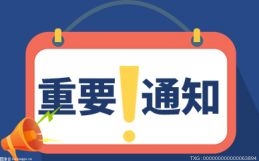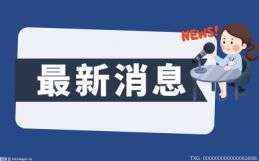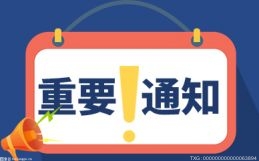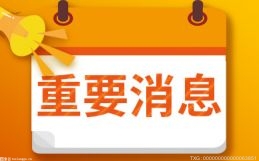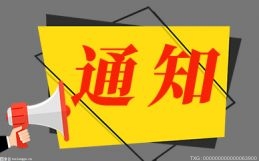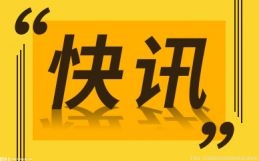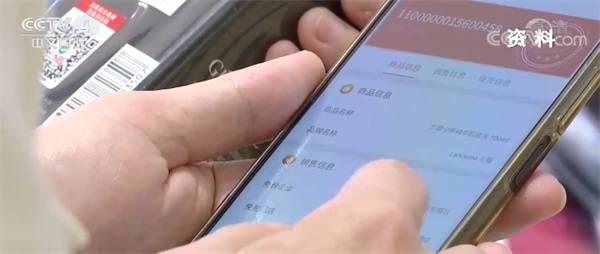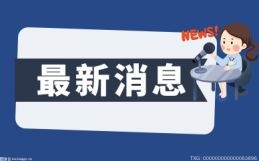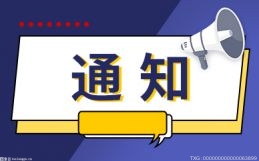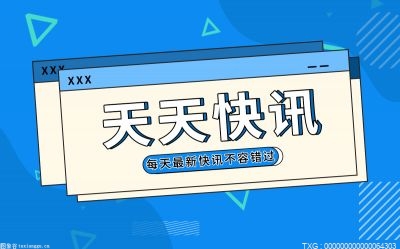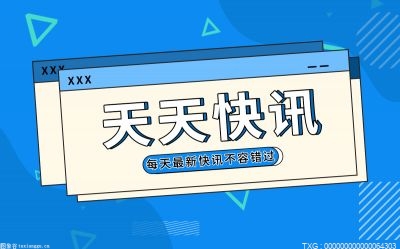初一英语要点知识归纳总结 初一英语要点知识有哪些?_焦点快报
- 星际派
- 2022-12-30 08:04:59
初一英语要点知识归纳总结
总结是指社会团体、企业单位和个人对某一阶段的学习、工作或其完成情况加以回顾和分析,得出教训和一些规律性认识的一种书面材料,它可使零星的、肤浅的、表面的感性认知上升到全面的、系统的、本质的理性认识上来,为此我们要做好回顾,写好总结。那么我们该怎么去写总结呢?以下是小编精心整理的初一英语要点知识归纳总结,供大家参考借鉴,希望可以帮助到有需要的朋友。
初一英语要点知识归纳总结1
短语归纳
 (资料图片)
(资料图片)
1. play chess 下国际象棋
2. play the guitar 弹吉他
3. speak English 说英语
4. English club 英语俱乐部
5. talk to 跟…说
6. play the violin 拉小提琴
7. play the piano 弹钢琴
8. play the drums 敲鼓
9. make friends 结交朋友
10. do kung fu 练 (中国) 功夫
11. tell stories 讲故事
12. play games 做游戏
13. on the weekend/on weekends 在周末
用法集萃
1. play +棋类/球类 下…棋/打…球
2. play the +西洋乐器 弹/拉…乐器
3. be good at doing sth.= do well in doing sth. 擅长做某事
4. be good with sb. 和某人相处地好
5. need sb. to do sth. 需要某人做某事
6. can + 动词原形 能/会做某事
7. a little + 不可数名词 一点儿…
8. join the…club 加入…俱乐部
9. like to do sth. =love to do sth. 喜欢/喜爱做某事
典句必背
1. —Can you draw? 你会画画吗?
—Yes, I can./No, I can’t. 是的,我会。/不,我不会。
2. —What club do you want to join? 你想加入哪个俱乐部?
—I want to join the chess club. 我想加入国际象棋俱乐部。
3. You can join the English club. 你可以加入英语俱乐部。
4. Sounds good./That sounds good. 听上去很好。
5. I can speak English and I can also play soccer. 我会说英语也会踢足球。
6. Please call Mrs. Miller at 555-3721. 请给米勒夫人拨打电话555-3721。
初一英语要点知识归纳总结2
一. 动词be(is,am,are)的用法
我(I)用am, 你(you)用are,is跟着他(he)、她(she)、它(it)。单数名词用is,复数名词全用are。变否定,更容易,be后not加上去。变疑问,往前提,句末问号莫丢弃。还有一条须注意,句首大写莫忘记。
二. this,that和it用法
(1)this和that是指示代词,it是人称代词。
(2)距离说话人近的人或物用this, 距离说话人远的人或物用that。如:
This is a flower. 这是一朵花。(近处)
That is a tree. 那是一棵树。(远处)
(3)放在一起的两样东西,先说this, 后说that。如:
This is a pen. That is a pencil. 这是一支钢笔。那是一支铅笔。
(4)向别人介绍某人时说This is…, 不说That is…。如:
This is Helen. Helen, this is Tom. 这是海伦。海伦,这是汤姆。
(5)This is 不能缩写, 而That is可以缩写。如:
This is a bike. That’s a car. 这是一辆自行车。那是一辆轿车。
(6)打电话时,介绍自己用this, 询问对方用that。如:
—Hello! Is that Miss Green? 喂,是格林小姐吗?
—Yes, this is. Who’s that? 是的,我是,你是谁?
注意:虽然汉语中使用“我”和“你”,但英语中打电话时绝不可以说:
I am…, Are you…?/Whoare you?
(7)在回答this或that作主语的疑问句时, 要用it代替this或that。如:
①—Is this a notebook? 这是笔记本吗?
—Yes, it is. 是的,它是。
②—What’s that? 那是什么?
—It’s a kite. 是只风筝。
三. these和those用法
this, that, these和those是指示代词,these是this的复数形式,指时间、距离较近的或下面要提到的人或事;those是that的复数形式,指时间、距离较远或前面已经提到过的人或事物。
①This is my bed. That is Lily’s bed. 这是我的床。那是莉莉的床。
②These pictures are good. 那些画很好。
③ Are those apple trees? 那些是苹果树吗?
在回答主语是these或those的疑问句时,通常用they代替these或those以避免重复。如:
④Are these/those your apples? 这些(那些)是你的苹果吗?
Yes, they are. 是的,他们是。
四. 不定冠词a和an
a和an都是不定冠词,表示一(个,支,本,块……)的意思,但不强调数量概念,而是强调类别,用来限定名词。a用在辅音音素开头的单数名词前,如:a pencil(一支铅笔),abook(一本书);an用在元音音素开头的名词前,如an eraser(一块橡皮)。如果名词前有修饰语,用a还是用an,则以该修饰语的第一音素决定用a还是用an。如:
a clock 一座钟 an old clock 一座旧钟 abook 一本书
an English book 一本英语书
a nice apple 一个可爱的苹果
an apple 一个苹果
初一英语要点知识归纳总结3
一、48个国际音标及26个英文字母的正确书写
要熟练掌握元音和辅音,5个元音字母(a, e, i, o, u),字母的正确占格及单词间距。
二、be动词的用法
be动词有三种变形,分别是:am, is, are。记忆口诀:
“我”用am, “你”用are, is用于“他、她、它”;单数全都用is,复数全部都用are。
三、人称及人称代词的不同形式(主格和宾格)
1、三种人称:第一人称(I, we),第二人称(you, you),第三人称(he, she, it, Maria)。
2、人称代词的主格,即人称代词位于句子主语位置时的形态:I, We, You, You, He, She, It, Maria。
3、人称代词的宾格,即人称代词位于句子宾语位置时的形态:me, us, you, you, him, her, it。
4、形容词性物主代词:my, our, your, your, his, her, its, their。
5、名词性物主代词:mine, ours, yours, yours, his, hers, its, theirs。
6、反身代词:myself, ourselves, yourself, yourselves, himself, herself, itself, themselves。
四、基数词(表示数量多少的词,大致相当于代数里的自然数)
zero, one, two, three, four, five, six, seven, eight, nine, ten, eleven, twelve, thirteen, fourteen, fifteen, sixteen, seventeen, eighteen, nineteen, twenty, twenty-one, twenty-two, twenty-three,twenty-four, twenty-five, twenty-six, twenty-seven, twenty-eight, twenty-nine, thirty, forty, fifty, sixty,seventy, eighty, ninety, one hundred,one hundred and one。
五、一般疑问句及特殊疑问句
1、一般疑问句:能用Yes或No来回答的问句。一般疑问句句尾读升调。
2、特殊疑问句:不能用Yes或No来回答的问句。特殊疑问句句尾读降调。
初一英语要点知识归纳总结4
几种时态
1,一般现在时
2,一般过去时
3,一般将来时
4,现在进行时
还有几种词
1,名词
2,代词
3,形容词
4,动词
5,冠词
初一英语语法
1、名词
A)、名词的数
我们知道名词可以分为可数名词和不可数名词,而不可数名词它没有复数形式,但可数名词却有单数和复数之分,复数的构成如下:
一)在后面加s。如:fathers,books,Americans,Germans,apples,bananas
二)x,sh,ch,s,tch后加es。如:boxes,glasses,dresses,watches,wishes,faxes
三)1)以辅音字母加y结尾的变y为i再加es如:baby-babies,family-families,duty-duties,comedy-comedies,documentary-documentaries,story-stories
2)以元音字母加y结尾的直接加s。如:day-days,boy-boys,toy-toys,key-keys,ways
四)以o结尾加s(外来词)。如:radios,photos,但如是辅音加o的加es:如:tomatoes西红柿,potatoes马铃薯
五)以f或fe结尾的变f为v再加es(s)。如:knife-knives,wife-wives,half-halves,shelf-shelves,leaf-leaves,yourself-yourselves
六)单复数相同(不变的)有:fish,sheep,deer鹿子,Chinese,Japanese
七)一般只有复数,没有单数的有:people,pants,shorts,shoes,glasses,gloves,clothes,socks
八)单词形式不变,既可以是单数也可以是复数的有:police警察局,警察,class班,同学,family家,家庭成员
九)合成的复数一般只加主要名词,多数为后一个单词。如:action movie-action movies,pen pal-pen pals;但如果是由man或woman所组成的合成词的复数则同时为复数。如:man doctor-men doctors,woman teacher-women teachers
十)有的单复数意思不同。如:fish鱼fishes鱼的种类,paper纸papers报纸,卷子,论文,work工作works作品,工厂,glass玻璃glasses玻璃杯,眼镜,orange桔子水oranges橙子,light光线lights灯,people人peoples民族,time时间times时代,次数,chicken鸡肉chickens小鸡
十一)单个字母的复数可以有两种形式直接加s或’s。如:Is(I’s),Ks(K’s)。但如是缩略词则只加s。如:IDs,VCDs,SARs
十二)特殊形式的有:child-children,man-men,woman-women,foot-feet,mouse-mice,policeman-policemen,Englishman-Englishmen
B)名词的格
当我们要表示某人的什么东西或人时,我们就要使用所有格形式。构成如下:
一)单数在后面加’s。如:brother’s,Mike’s,teacher’s
二)复数以s结尾的直接在s后加’,如果不是以s结尾的与单数一样处理。如:Teachers’Day教师节,classmates’;Children’s Day六一节,Women’s Day三八节
三)由and并列的名词所有时,如果是共同所有同一人或物时,只加最后一个’s,但分别拥有时却分别按单数形式处理。如:Mike and Ben’s room迈克和本的房间(共住一间),Mike’s and Ben’s rooms迈克和本的房间(各自的房间)
2、代词
项目人称代词物主代词指示代词反身代词
人称主格宾格形容词名词性
第一人称单数I me my mine myself
复数we us our ours ourselves
第二人称单数you you your yours yourself
复数you you your yours yourselves
第三人称单数she her her hers herself
he him his his himself
it it its its this that itself
复数they them their theirs these thosethemselves
3、动词
A)第三人称单数
当动词是第三人称单数时,动词应该像名词的单数变动词那样加s,如下:
一)一般在词后加s。如:comes,spells,waits,talks,sees,dances,trains
二)在x,sh,ch,s,tch后加es。如:watches,washes,wishes,finishes
三)1)以辅音字母加y结尾的变y为i再加es。如:study-studies,hurry-hurries,try-tries
2)以元音字母加y结尾的直接加s。如:plays,says,stays,enjoys,buys
四)以o结尾加es。如:does,goes
五)特殊的有:are-is,have-has
B)现在分词
当我们说某人正在做什么事时,动词要使用分词形式,不能用原形,构成如下:
一)一般在后加ing。如:spell-spelling,sing-singing,see-seeing,train-training,play-playing,hurry-hurrying,watch-watching,go-going,do-doing
二)以不发音e的结尾的去掉e再加ing。如:dance-dancing,wake-waking,take-taking,practice-practicing,write-writing,have-having
三)以重读闭音节结尾且一个元音字母+一个辅音字母(注意除开字母组合如show–showing,draw-drawing)要双写最后的辅音字母再加ing。如:put-putting,run-running,get-getting,let-letting,begin-beginning
四)以ie结尾的变ie为y再加ing。如:tie-tying系die-dying死lie-lying位于
4、形容词的级
我们在对两个或以上的人或物进行对比时,则要使用比较或最高级形式。构成如下:
一)一般在词后加er或est(如果是以e结尾则直接加r或st)。如:greater-greatest,shorter–shortest,taller–tallest,longer–longest,nicer-nicest,larger-largest
二)以重读闭音节结尾且1个元音字母+1个辅音字母(字母组合除外,如few-fewer fewest)结尾的双写结尾的辅音再加er/est。如:big-bigger biggest,red-redder reddest,hot-hotter hottest
三)以辅音字母+y结尾的变y为i加er/est。如:happy-happier happiest,sorry-sorrier sorriest,friendly-friendlier friendliest(more friendly mostfriendly),busy-busier busiest,easy-easier easiest
四)特殊情况:(两好多坏,一少老远)
good/well-better best many/much-more most bad/ill–worse worst
little-lessleast old-older/elder oldest/eldest far-farther/further farthest/furthest
5、数词(基变序,有规则;一、二、三,自己背;五、八、九、十二;其它后接th;y结尾,变为i,eth跟上去。)first,second,third;fifth,eighth,ninth,twelfth;seventh,tenth,thirteenth,hundredth;twenty-twentieth,forty-fortieth,ninety-ninetieth
初一英语要点知识归纳总结5
1.表示“标准或单位”的介词:at,for,by
(1)at表示“以……速度”“以……价格”
He drovea taspee do f80 milesan hour.他以每小时8英里的速度行驶。
I sold my cara tahigh price.我以高价出售了我的汽车。
(2)for用……交换
I bought it for20 dollars.买它花了我20美元。
How much for these apples?这些苹果多少钱?
at与for都表示价格,但at表示“单价”,for表示总价,at后一般跟“price”这个词,而for后只能跟总钱数。
如:I bought it atalow price.我买它的价格很低。
I bought it atthe priceof $80 apound.我以每磅80美元的价格买的它。
I sold it for $10.我10美元把它卖掉了。
(3)by以……计,后跟度量单位
Goldiss old by thegram.金以克出售。
They paidhim by the month.他们按月给他计酬。
初一英语要点知识归纳总结6
词汇
1.中学阶段常见科目
Chinese语文
P.E.体育
art美术
science科学
music音乐
math数学
history历史
biology生物
physics物理
chemistry化学
2.“favorite+名词”表示“最喜欢的……”
Favorite city 最喜欢的城市
Favorite food 最喜欢的食物
Favorite color 最喜欢的颜色
Favorite TV show 最喜欢的电视秀
Favorite sport 最喜欢的运动
Favorite subject 最喜欢的科目
3.on Monday 在星期一
4.“have+学科名词”表示“上……课”
Have math 上数学课
Have science 上科学课
5.my music teacher 我的音乐老师
6.My last class 我的最后一节课
7.Be tired 疲劳的(相当于feel tired)
8.After lunch 午饭后
After class 下课后
9.play+球类名词
10.Play with sth. 和某物玩耍
Play with my dog 和我的狗一起玩耍
句式
1.询问某人最喜欢的物品的句型
—What’s your favorite subject?
—My favorite subject is science
2.询问原因的句型及答语—Why do you like P.E.?
—Because it’s fun.
3.询问某人的句型及答语
—Who is your science teacher?
—My science teacher is Mr Wang.
4.主系表结构——sb. + be动词 + 形容词
I’m really busy!
5.主系表结构——sth. + be动词 + 形容词
It’s difficult, but interesting.
Music is relaxing.
6.and连接的并列句
Our teacher is very strict and I’m usually very tired after.
句型:
What’s your favorite subject?
My favorite subject is math.
What’s his favorite subject?
His favorite subject is art.
What’s her favorite subject?
Her favorite subject is P.E.
What subject do you like best? I like math best.
Why do you like math? Because it’s interesting.
Why does he like art? Because it’s fun.
Who is your art teacher?
Our art teacher is Mrs. Jones.
I’m really busy doing my homework.
She is busy with her work.
I have science. It’s too difficult.
I’m really tired of watching TV
I like to play with my dog.
He is always running around with me.
结构:
1, favorite = like… best 最喜爱……
2, be busy doing sth 忙于做某事
be busy with sth 忙于某事
3, be tired of doing sth 做……感到厌烦
初一英语要点知识归纳总结7
I.重点短语
1.Sitdown
2.onduty
3.inEnglish
4.haveaseat
5.athome
6.looklike
7.lookat
8.havealook
9.comeon
10.atwork
11.atschool
12.puton
13.lookafter
14.getup
15.goshopping
II.重要句型
1.helpsb.dosth.
2.Whatabout…?
3.Let’sdosth.
4.It’stimetodosth.
5.It’stimefor…
6.What’s…?Itis…/It’s…
7.Whereis…?It’s….
8.Howoldareyou?I’m….
9.Whatclassareyouin?I’min….
10.Welcometo….
11.What’s…plus…?It’s….
12.Ithink…
13.Who’sthis?Thisis….
14.Whatcanyousee?Icansee….
15.Thereis(are)….
16.Whatcolourisit(arethey)?It’s(They’re)…
17.Whose…isthis?It’s….
18.Whattimeisit?It’s….
III.交际用语
1.Goodmorning,Miss/Mr….
2.Hello!Hi!
3.Nicetomeetyou.Nicetomeetyou,too.
4.Howareyou?I’mfine,thankyou/thanks.Andyou?
5.Seeyou.Seeyoulater.
6.Thankyou!You’rewelcome.
7.Goodbye!Bye!
8.What’syourname?Mynameis….
9.Hereyouare.Thisway,please.
10.Who’sondutytoday?
11.Let’sdo.
12.Letmesee.
IV.重要语法
1.动词be的用法;
2.人称代词和物主代词的用法;
3.名词的单复数和所有格的用法;
4.冠词的基本用法;
5.Therebe句型的用法。
初一英语要点知识归纳总结8
从介词本身的结构来看:
1. 简单介词:at, in, on, since, from
2. 复合介词:as for 至于;as to 关于;out of 从,出自;into 进入;onto 到……上面去
3. 二重介词:from under 从……的下面;from behind 从……的后面;until after 直到……之后;from among 从……当中
4. 短语介词:according to 根据;ahead of 在……之前;apart from 在……之外;because of 由于;by means of 以……之手段;by way of 经由
从介词本身的意义来看:
1. 表示时间的介词
about, around, before, by, at, after, in, on, around, between, during, for, from, since, till, until, within
2. 表示地点的介词
about, at, in, on, over, through, across, along, around, before, between, beyond, down, up, to, toward, under, near
3. 表示方式的介词
by bus 乘公共汽车
see with one"s own eyes 亲眼看...
write in ink 用墨水写...
on foot 步行,徒步
He looked at me without expression. 他毫无表情地看着我。
4. 表示原因的介词
He was punished for stealing. 他因偷窃而被惩罚。
suffer from a cold 患伤风
be ashamed of 因……而感到羞愧
shake with cold 因寒冷而发抖
5. 表示关于的介词
What is the book about? 这本书是关于什么内容的?(about关于一般情况)
I heard him talk on Chinese medicine last night. 昨晚我听到他讲中国医学。(on关于理论、学术)
a long story of adventure 一个长篇冒险故事
6. 表示比较的介词
His face is as black as coal. 他的脸跟煤炭一样黑。
He saw a number of small hard things like stones. 他看见一些像石头一样的小小的坚硬的东西。
7. 表示除外的介词
He works every day but Sunday. 除星期天外,他每天都工作。
We all went except Tom. 除汤姆外,我们都去了。
The letter is good except for the spelling. 这封信除了拼写错误之外,还算是很通顺的。
Besides English, he studies German and French. 除英语外,他还学习德语和法语。(besides中文译成“除……外”,实则表示包含在内。)
8. 表示条件的介词
With your help, we might finish the work earlier. 有你的帮助,我们可能早点做完这工作。
Man cannot live without water. 如果没有水人就不能活。
9. 表示结果的介词
She tore the letter to pieces. 她把信撕个粉碎。
10. 表示对于的介词
Sea air is good for the health. 海上的空气对健康有好处。
To her it was all unusual. 这一切对她都很不平常。
初一英语要点知识归纳总结9
1. What do you see? I see a frog/rabbit/bee/bird.
2. What do you hear? I hear a hen/sheep/dog/cat.
3. Smell the noodles, Ben. Taste the soup, Kitty. It’s nice. Yummy. Yummy.
4. I like balls. I like dolls. I like kites. I like bicycles.
5. Do you like sweets/jelly/biscuit/ice cream? Yes./ No. I like…
6. Hello! What do you like? I like water/cola/juice/milk.
7. Spring is green. Spring is warm. Summer is red. Summer is hot.
8. How is the weather? It’s cloudy/sunny/rainy/windy.
9. What do you need? I need a new T-shirt/dress/shorts/blouse.
10. What can you do? I can sing/dance/draw.What can she/he do? She/He can ride/skip/play/fly.
11. Happy New Year! A gift /card for you, Kitty. Thank you.
12. I’m the wolf/boy/farmer /narrator.
初一英语要点知识归纳总结10
能用作宾语补足语的过去分词一般都是及物动词,表示被动意义或已完成意义,有时候两者兼而有之。作宾语补足语的过去分词与宾语有逻辑上的动宾关系,即宾语是过去分词动作的对象。
She found the door broken in when she came back.她回来时发现有人破门而人。
My grandfather had his old house rebuilt.我爷爷找人重修了一下他的.旧房子。
少数不及物动词的过去分词用作宾补时,强调动作完成后的状态.
They found all the guests gone when they woke up.当他们醒来时,发现所有的客人都走了。
动词-ed形式作宾语补足语的基本用法
动词的-ed形式可以在“主语+谓语+宾语+宾语补足语”句型中充当宾语补足语。在这一结构中,动词-ed形式和它前面的宾语构成逻辑上的被动关系。如果这种句子改为被动语态,原来的宾语补足语变成了主语补足语。
1. I must get my bike repaired.我必须请人修理自行车。(宾语补足语)
2. The girl was found beaten black and blue.人们发现那女孩被打得青一块紫一块。(主语补足语)
(1)动词-ed形式可作表示感觉和心理状态的动词的宾语补足语,这类动词包括see, hear, watch, notice, feel, find, think, suppose, consider等。
We thought the game lost.我们认为球赛输了。
I have never heard him spoken ill of others.我从未听过有人说他的坏话。
They considered the matter settled.他们认为这问题解决了。
(2)动词-ed形式可作使役动词的宾语补足语,这类动词包括make, get, have, keep, leave, hold等。
I have my hair cut once a month.我每个月理一次发。
He was trying to make himself understood.他正努力使别人听懂自己。
“have+宾语+done”结构有三个含义:
①(请人)把某事做完。She had her house repaired.她请人把屋子修好了。
Where did you have your hair cut?你在哪儿理的发?
②遭遇某种意外情况。He had his hat blown away on his way home.在回家的路上他的帽子被吹掉了。
She had her wallet stolen yesterday.昨天她的钱包被偷了。
③完成某事(自己也可能参与)。I have had all my spelling mistakes corrected.我把所有的拼写错误都改正了。
He has had one thousand yuan saved this year.他今年已存了1000元。
(3)动词-ed形式可作表示希望、要求、命令等动词的宾语补足语,这类动词包括like,want, wish, expect, order等”这一类动词的后面作宾语补足语。
He won’t like such questions discussed at the meeting.他不喜欢在会议上讨论这样的问题。
The students wish the TV serial plays continued.学生们希望电视连续剧继续播下去。
(4)过去分词用在“with+宾语+宾补”这一结构中,过去分词与宾语之间是动宾关系。
The thief was brought in with his hands tied behind his back.小偷被带进来了,双手被反绑在后面。
初一英语要点知识归纳总结11
1.过去分词作状语表示被动或完成,但有些过去分词(短语)因来源于系表结构,作状语时不表动作而表状态。这样的过去分词(短语)常见的有: lost (迷路); seated (坐); absorbed in (全神贯注于); dressed in (穿着); tired of (厌烦)等。如:
Absorbed in deep thought, he didn’t hear the sound.因为沉浸在思考之中,所以他没听到那个声音。
2.过去分词作状语来源于状语从句,在句中一般能作五种状语,即时间、原因、条件、让步和方式状语。如:
Caught in a heavy rain, he was all wet.因为淋了一场大雨,所以他全身湿透了。
(Caught in a heavy rain相当于原因状语从句Because he was caught in a heavy rain)
Grown in rich soil, these seeds can grow fast.如果种在肥沃的土壤里,这些种子能长得很快。
(Grown in rich soil相当于条件状语从句If these seeds are grown in rich soil)
注意:
①当从句的主语与主句的主语一致时,才可以把从句的主语省略,且省略掉的主语与其逻辑谓语是被动关系或如第一段中所讲的表示状态。
②把状语从句改为过去分词作状语时有时还可保留连词,构成“连词+过去分词”结构作状语,即“while (when, once, until, if, though等连词)+过去分词”结构。如:
When given a medical examination, you should keep calm.当你做体格检查时要保持镇定。
Though beaten by the opposite team, the players didn’t lose heart.
尽管这些球员被对方球队打败了,但他们并没有灰心。
初一英语要点知识归纳总结12
最基本构成:主语+谓语+宾语,其中谓语由动词来充当。
主谓一致原则,就是句子的谓语要始终与主语保持数量上的一致性。当主语是第三人称单数(简称“三单”)时,谓语动词也要相应变成单数形式;当主语非“三单”时,谓语动词就用原形。实意动词变“三单”的规则如下:
1)一般动词在词尾加“-s”,如:like-likes,tell-tells,play-plays等;
2)以字母s,x,ch,sh结尾的动词加“-es”,如:guess-guesses,teach-teaches,watch-watches等;
3)以o结尾的动词一般加“-es”,如:do-does,go-goes等;
4)以辅音字母加y结尾的动词,先变y为i,再加“-而是”,如:fly-flies,carry-carries等;
5)have的三单形式是has;
关键词:
- 初一英语要点知识归纳总结 初一英语要点知2022-12-30
- 艺考钢琴考试有哪些注意事项 艺考钢琴考试2022-12-30
- 今日关注:什么是产品三维动画 产品三维动2022-12-30
- 移动通信营销推广方案是什么 移动通信营2022-12-30
- 招聘流程管理制度怎么制定 招聘流程管理制2022-12-30
- 每日聚焦:测试工程师岗位职责是什么 测试2022-12-30
- 世界热议:小升初语文试卷及答案参考 小升2022-12-30
- 劳动课教学设计怎么做 劳动课教学设计范文2022-12-30
- 全球快报:骑动感单车的注意事项有哪些 骑2022-12-30
- care是什么意思英语 care的意思是什么?2022-12-30
- 硬盘接口怎么看 什么是硬盘?:世界报道2022-12-30
- 投射屏幕怎么用 投射屏幕是什么意思?:天2022-12-30
- 赶黄草的功效是什么 赶黄草的作用有哪些?2022-12-30
- 星巴克星冰乐什么好喝 星巴克星冰乐哪个好2022-12-30
- 今亮点!北京路在哪个地铁站附近 北京路附2022-12-30
- 微资讯!斐讯路由器怎么样 斐讯路由器好不2022-12-30
- 二氧化碳激光打标机的优缺点是什么 二氧化2022-12-30
- 空气中的纯净物有哪些 空气中的纯净物是什2022-12-30
- 讲解扩音器原理是什么 扩音器是什么原理?2022-12-30
- 蓝屏修复工具V1.0绿色版功能简介 蓝屏修复2022-12-30
- 全球热头条丨无崖子最喜欢的人是谁 无崖子2022-12-30
- 携程商旅电话是多少 携程商旅人工服务电话2022-12-30
- QQ邮箱怎么注册谷歌邮箱 谷歌邮箱怎么注册?2022-12-30
- 缘木求鱼的意思是什么 缘木求鱼是什么意思2022-12-30
- 表达效果和表达方式的区别是什么 表达效果2022-12-30
- 扩张性财政政策对经济的影响是什么 扩张性2022-12-30
- 世界今热点:歼十与枭龙谁厉害 枭龙战机和2022-12-30
- 每日快看:什么是进士及第 进士及第是什么2022-12-30
- 潘子为什么要死 潘子是怎么死的?2022-12-30
- 中央电视塔门票老人有优惠吗 中央电视塔门2022-12-30











